Growing Basil Indoors can seem daunting, but trust me, it’s easier than you think! Imagine having fresh, fragrant basil right at your fingertips, ready to elevate your pasta dishes, salads, and even cocktails, all year round. No more sad, wilted grocery store basil – just vibrant, flavorful leaves whenever you need them.
Basil, with its rich history tracing back to ancient India, has been revered for centuries not only for its culinary uses but also for its medicinal properties. In some cultures, it’s even considered a sacred herb, symbolizing love and good fortune. But beyond its historical significance, the real magic of basil lies in its ability to transform ordinary meals into extraordinary culinary experiences.
Let’s face it, relying on store-bought herbs can be expensive and often disappointing. They tend to lose their freshness quickly, leaving you with a handful of sad, brown leaves. That’s where the beauty of growing basil indoors comes in. This DIY guide will equip you with simple yet effective tricks and hacks to cultivate your own thriving basil plant right in your home. I’ll walk you through everything from choosing the right pot and soil to providing the perfect amount of light and water. Get ready to unleash your inner gardener and enjoy the satisfaction of harvesting your own delicious basil, no matter the season!
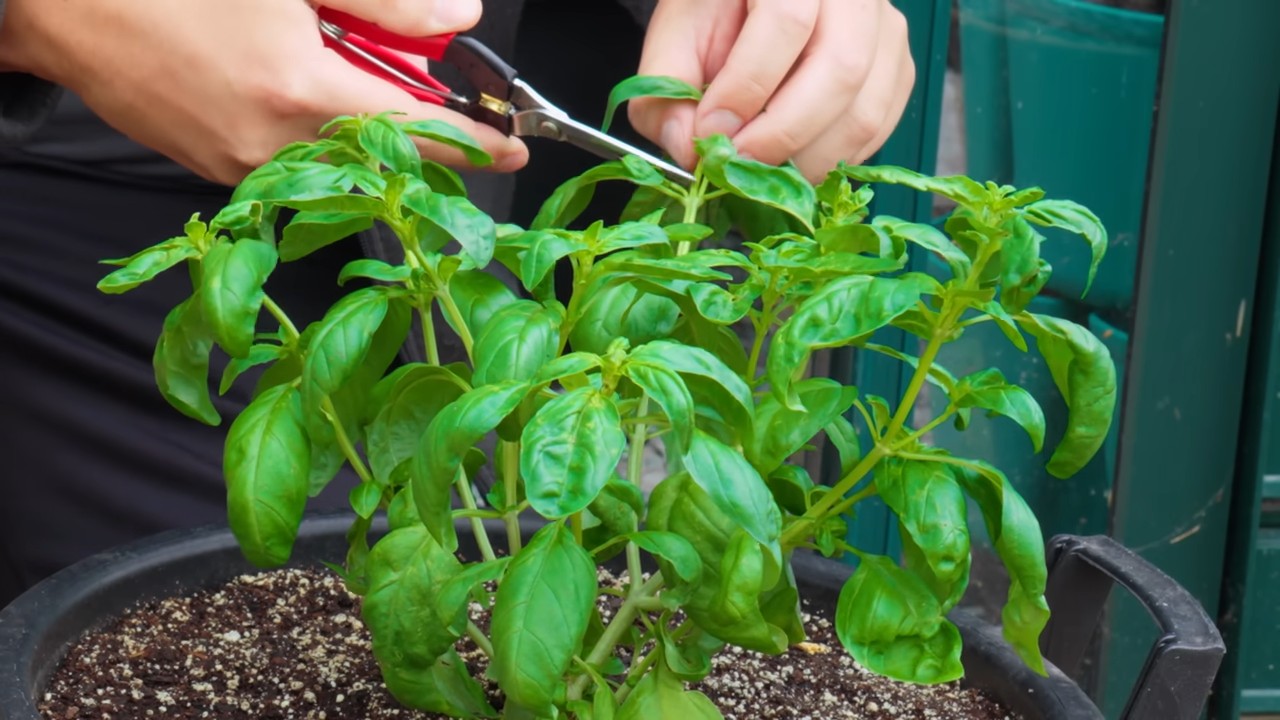
Growing Basil Indoors: A Beginner’s Guide to Fresh Herbs Year-Round
Hey there, fellow plant enthusiasts! Ever dreamt of having fresh, fragrant basil right at your fingertips, no matter the season? Well, dream no more! Growing basil indoors is surprisingly easy and incredibly rewarding. I’m going to walk you through everything you need to know to cultivate your own little basil paradise inside your home. Let’s get started!
Choosing the Right Basil Variety
First things first, let’s talk basil varieties. While all basil is delicious, some are better suited for indoor growing than others.
* Genovese Basil: This is your classic Italian basil, perfect for pesto and all sorts of culinary delights. It’s a reliable choice for indoor growing.
* Dwarf Basil: As the name suggests, dwarf basil varieties like ‘Spicy Globe’ stay compact, making them ideal for smaller spaces. They’re also quite flavorful.
* Lemon Basil: If you’re looking for a citrusy twist, lemon basil is a fantastic option. It adds a bright, refreshing flavor to salads and teas.
* Thai Basil: With its anise-like flavor, Thai basil is a must-have for Asian cuisine. It’s relatively easy to grow indoors as well.
I personally recommend starting with Genovese or Dwarf basil – they’re both beginner-friendly and readily available.
Gathering Your Supplies
Okay, now that we’ve chosen our basil variety, let’s gather our supplies. You’ll need:
* Basil Seeds or Seedlings: You can start from seeds or buy small basil plants from a nursery. Starting from seeds is more economical, but seedlings give you a head start.
* Potting Mix: Use a high-quality, well-draining potting mix. Avoid using garden soil, as it can compact and hinder drainage.
* Pots: Choose pots that are at least 6 inches in diameter. Make sure they have drainage holes to prevent waterlogging.
* Grow Lights (Optional but Recommended): Basil needs plenty of light, so if you don’t have a sunny windowsill, grow lights are essential.
* Watering Can or Spray Bottle: For gentle watering.
* Fertilizer (Optional): A balanced liquid fertilizer can help your basil thrive.
* Small Shovel or Trowel: For transplanting seedlings.
Planting Your Basil
Now for the fun part – planting! Whether you’re starting from seeds or seedlings, the process is pretty straightforward.
Starting from Seeds:
1. Prepare Your Pot: Fill your pot with potting mix, leaving about an inch of space at the top. Gently pat down the soil.
2. Sow the Seeds: Sprinkle the basil seeds evenly over the surface of the soil. You don’t need to bury them too deep – just lightly press them into the soil.
3. Water Gently: Use a spray bottle to mist the soil thoroughly. You want to moisten the soil without disturbing the seeds.
4. Cover with Plastic Wrap (Optional): Covering the pot with plastic wrap can help retain moisture and speed up germination. Just make sure to remove it once the seedlings emerge.
5. Place in a Warm Location: Basil seeds germinate best in warm temperatures (around 70-80°F).
6. Wait Patiently: Germination usually takes about 5-10 days. Keep the soil consistently moist during this time.
7. Thin the Seedlings: Once the seedlings have developed a few sets of true leaves (the leaves that look like basil leaves, not the initial seed leaves), thin them out so that there’s about 2-3 inches of space between each plant. This will give them room to grow.
Starting from Seedlings:
1. Prepare Your Pot: Fill your pot with potting mix, leaving about an inch of space at the top.
2. Gently Remove the Seedling: Carefully remove the basil seedling from its original container. Gently loosen the roots if they’re tightly packed.
3. Plant the Seedling: Dig a small hole in the potting mix and place the seedling in the hole. Make sure the top of the root ball is level with the surface of the soil.
4. Fill with Soil: Gently fill the hole with potting mix and pat down the soil around the seedling.
5. Water Thoroughly: Water the seedling thoroughly until water drains out of the bottom of the pot.
Providing the Right Environment
Basil is a bit of a diva when it comes to its environment, but don’t worry, it’s nothing you can’t handle!
* Light: Basil needs at least 6-8 hours of sunlight per day. If you don’t have a sunny windowsill, use grow lights. Place the lights about 6-12 inches above the plants. I’ve found that LED grow lights work really well and don’t generate too much heat.
* Temperature: Basil prefers warm temperatures (around 65-80°F). Avoid placing your basil near drafts or cold windows.
* Humidity: Basil likes humidity, but not too much. If your home is very dry, you can increase humidity by placing a tray of water near the plants or using a humidifier.
* Air Circulation: Good air circulation is important to prevent fungal diseases. Make sure your basil plants have enough space between them and that there’s good airflow in the room.
Watering and Fertilizing
Watering and fertilizing are crucial for healthy basil growth.
* Watering: Water your basil when the top inch of soil feels dry to the touch. Avoid overwatering, as this can lead to root rot. Water thoroughly until water drains out of the bottom of the pot.
* Fertilizing: If you want to give your basil a boost, you can fertilize it every 2-4 weeks with a balanced liquid fertilizer. Follow the instructions on the fertilizer label. I personally like to use organic fertilizers whenever possible.
Pruning and Harvesting
Pruning and harvesting are essential for encouraging bushy growth and preventing your basil from flowering.
* Pinching: When your basil plant is about 6 inches tall, pinch off the top set of leaves. This will encourage the plant to branch out and become bushier.
* Harvesting: You can start harvesting basil leaves once the plant has reached a decent size. Simply snip off the leaves you need with scissors or your fingers.
* Preventing Flowering: Basil plants will eventually flower, which can make the leaves taste bitter. To prevent flowering, pinch off any flower buds as soon as you see them.
* Regular Harvesting: The more you harvest, the more your basil plant will grow! Don’t be afraid to use your basil – it’s meant to be enjoyed.
Troubleshooting Common Problems
Even with the best care, you might encounter some problems while growing basil indoors. Here are a few common issues and how to address them:
* Yellowing Leaves: This can be caused by overwatering, underwatering, or nutrient deficiencies. Check the soil moisture and adjust your watering accordingly. If you suspect a nutrient deficiency, try fertilizing your basil.
* Leggy Growth: This is usually caused by insufficient light. Move your basil to a sunnier location or use grow lights.
* Pests: Basil can be susceptible to pests like aphids and spider mites. Inspect your plants regularly and treat any infestations promptly. You can use insecticidal soap or neem oil to control pests.
* Fungal Diseases: Fungal diseases like powdery mildew can occur in humid conditions. Ensure good air circulation and avoid overwatering. You can also use a fungicide if necessary.
Enjoying Your Homegrown Basil
Congratulations! You’ve successfully grown basil indoors. Now it’s time to enjoy the fruits (or rather, leaves) of your labor. Use your fresh basil in pesto, salads, sauces, soups, and countless other dishes. You can also dry or freeze your basil for later use.
I hope this guide has been helpful. Growing basil indoors is a rewarding experience that will bring fresh flavor and fragrance to your home all year round. Happy gardening!
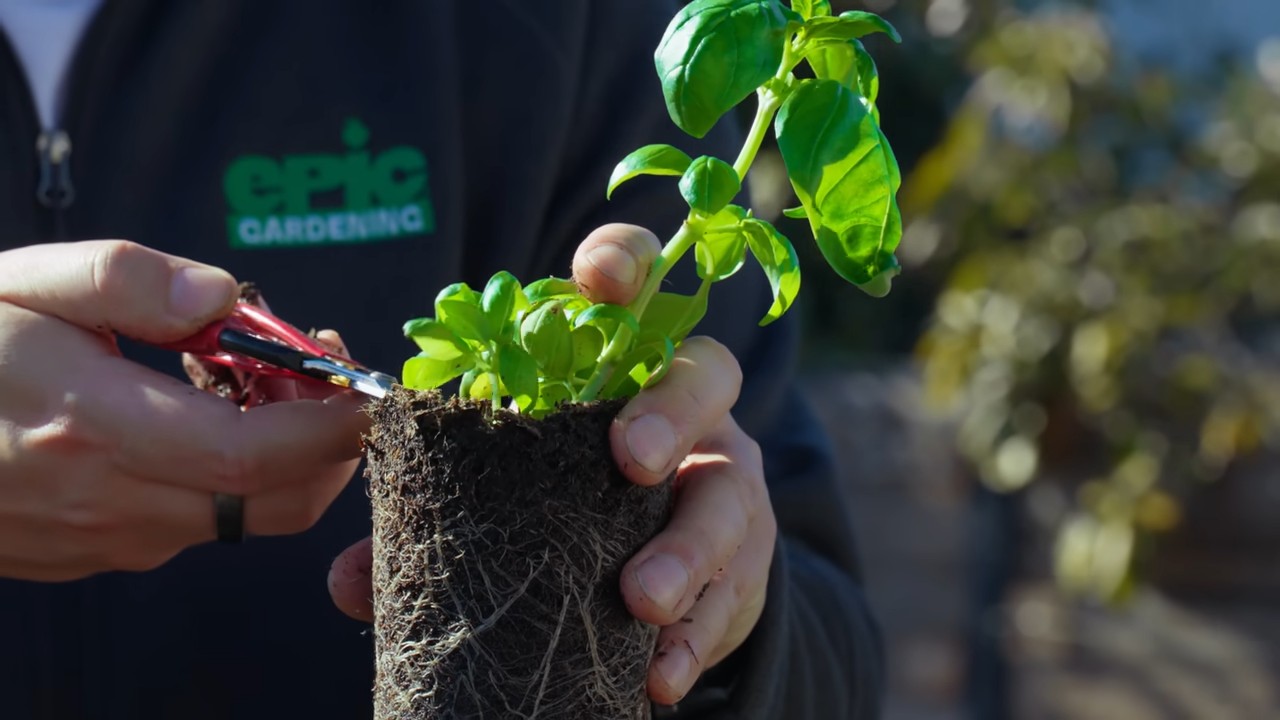
Conclusion
So, there you have it! Mastering the art of growing basil indoors is not only achievable but also incredibly rewarding. We’ve walked through the essential steps, from selecting the right variety to providing optimal light and care. But why is this DIY trick a must-try? Because fresh, fragrant basil at your fingertips, year-round, is a game-changer for any home cook. Imagine the vibrant pesto, the aromatic Caprese salads, the flavorful pasta sauces – all elevated by the intense, fresh taste of homegrown basil. No more sad, wilted bunches from the grocery store!
Beyond the convenience and superior flavor, growing your own basil indoors is also a sustainable and cost-effective choice. You’re reducing your reliance on commercially grown produce, minimizing your carbon footprint, and saving money in the long run. Plus, there’s something deeply satisfying about nurturing a plant from seedling to harvest, witnessing its growth, and reaping the delicious rewards of your labor.
But the journey doesn’t end here! Feel free to experiment with different basil varieties. Genovese is a classic for pesto, but lemon basil adds a citrusy twist to salads and teas, while Thai basil brings an anise-like flavor to Asian-inspired dishes. You can also try different growing mediums, such as hydroponics, for a soilless approach. Consider companion planting your basil with tomatoes or peppers indoors to create a mini-ecosystem that benefits all your plants.
Don’t be afraid to get creative with your indoor basil garden. Use decorative pots to add a touch of greenery to your kitchen windowsill, or create a vertical garden for a stunning and space-saving display. The possibilities are endless!
We wholeheartedly encourage you to give this DIY trick a try. Growing basil indoors is easier than you might think, and the rewards are well worth the effort. Once you experience the joy of harvesting your own fresh basil, you’ll never go back to store-bought again.
And most importantly, we want to hear about your experience! Share your tips, tricks, and triumphs in the comments below. Let us know what worked for you, what challenges you faced, and what delicious dishes you created with your homegrown basil. Together, we can build a community of indoor basil enthusiasts and inspire others to embark on this rewarding journey. So, grab your seeds, find a sunny spot, and get ready to enjoy the fresh, vibrant flavor of homegrown basil all year round! Let’s cultivate a greener, more flavorful world, one basil plant at a time. Remember, the key to successful indoor gardening, especially when growing basil indoors, is consistent care and attention. Happy growing!
Frequently Asked Questions (FAQ)
1. What is the best type of basil to grow indoors?
The best type of basil to grow indoors depends on your personal preferences and culinary needs. However, some varieties tend to thrive better in indoor environments. Genovese basil is a classic choice, known for its robust flavor and suitability for pesto. It’s relatively easy to grow and widely available. Other good options include:
* Dwarf Basil: This compact variety is perfect for small spaces and containers. It has a slightly milder flavor than Genovese basil.
* Lemon Basil: As the name suggests, lemon basil has a distinct citrusy aroma and flavor, making it a great addition to salads, teas, and seafood dishes.
* Thai Basil: Thai basil offers an anise-like flavor that complements Asian cuisine beautifully. It’s more heat-tolerant than other varieties.
* Purple Basil: This visually striking basil adds a pop of color to your indoor garden and has a slightly spicier flavor.
Ultimately, the best way to find your favorite is to experiment with different varieties and see which ones thrive in your specific indoor environment.
2. How much sunlight does indoor basil need?
Basil requires a significant amount of sunlight to thrive. Ideally, it needs at least 6-8 hours of direct sunlight per day. If you don’t have a south-facing window that provides sufficient sunlight, you’ll need to supplement with artificial lighting.
* Natural Sunlight: Place your basil plants near a south-facing window where they can receive the most direct sunlight. Rotate the plants regularly to ensure even growth on all sides.
* Artificial Lighting: If natural sunlight is limited, use grow lights to provide the necessary illumination. Fluorescent or LED grow lights are excellent choices. Position the lights a few inches above the plants and keep them on for 14-16 hours per day.
Insufficient sunlight can lead to leggy growth, pale leaves, and a lack of flavor. Monitor your plants closely and adjust the lighting as needed.
3. What type of soil is best for growing basil indoors?
Basil prefers well-draining soil that is rich in organic matter. A good potting mix for indoor basil should retain moisture without becoming waterlogged.
* Commercial Potting Mix: A high-quality commercial potting mix specifically formulated for herbs or vegetables is a convenient and reliable option.
* DIY Potting Mix: You can also create your own potting mix by combining equal parts of:
* Peat moss or coco coir (for moisture retention)
* Perlite or vermiculite (for drainage)
* Compost or aged manure (for nutrients)
Avoid using garden soil, as it can be too heavy and may contain pests or diseases. Ensure that your chosen potting mix has good drainage to prevent root rot.
4. How often should I water my indoor basil plants?
Watering frequency depends on several factors, including the size of the pot, the type of soil, and the ambient temperature. As a general rule, water your basil plants when the top inch of soil feels dry to the touch.
* Check the Soil: Use your finger to check the moisture level of the soil. If it feels dry, it’s time to water.
* Water Thoroughly: Water the plants thoroughly until water drains out of the bottom of the pot. This ensures that the roots are adequately hydrated.
* Avoid Overwatering: Overwatering can lead to root rot, which is a common problem for indoor basil plants. Avoid letting the plants sit in standing water.
* Adjust Watering: Adjust your watering schedule based on the weather and the plant’s needs. During hot, dry periods, you may need to water more frequently.
5. How do I harvest basil leaves from my indoor plants?
Harvesting basil leaves regularly encourages the plant to grow bushier and produce more leaves.
* Pinch Off Leaves: Use your fingers or scissors to pinch off the leaves just above a leaf node (the point where leaves grow from the stem).
* Harvest Regularly: Harvest leaves regularly, even if you don’t need them immediately. This will encourage the plant to produce more growth.
* Avoid Over-Harvesting: Don’t remove more than one-third of the plant’s leaves at a time, as this can stress the plant.
* Pinch Off Flower Buds: Pinch off any flower buds that appear, as flowering will reduce leaf production and flavor.
6. What are some common problems when growing basil indoors and how can I fix them?
Several common problems can arise when growing basil indoors. Here are some solutions:
* Leggy Growth: Insufficient sunlight is the most common cause of leggy growth. Provide more light, either through a south-facing window or with grow lights.
* Yellowing Leaves: Yellowing leaves can indicate overwatering, underwatering, or nutrient deficiencies. Check the soil moisture and adjust your watering schedule accordingly. Fertilize the plants with a balanced liquid fertilizer every few weeks.
* Pests: Common pests that can affect indoor basil plants include aphids, spider mites, and whiteflies. Inspect your plants regularly and treat any infestations with insecticidal soap or neem oil.
* Root Rot: Root rot is caused by overwatering and poor drainage. Ensure that your potting mix is well-draining and avoid letting the plants sit in standing water. If root rot is severe, you may need to repot the plant in fresh soil.
7. Can I grow basil from seed indoors?
Yes, you can absolutely grow basil from seed indoors. In fact, starting from seed is a great way to have a continuous supply of fresh basil.
* Starting Seeds: Sow basil seeds in small pots or seed trays filled with seed-starting mix. Keep the soil moist and warm (around 70-75°F).
* Germination: Basil seeds typically germinate within 5-10 days.
* Transplanting: Once the seedlings have developed a few sets of true leaves, transplant them into larger pots filled with potting mix.
* Care: Provide the seedlings with plenty of light and water, and fertilize them regularly.
Starting basil from seed indoors allows you to control the growing environment and ensure that your plants get off to a healthy start.

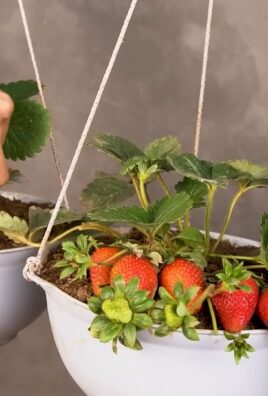
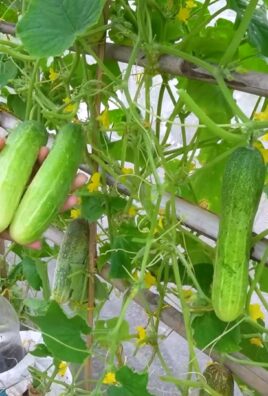
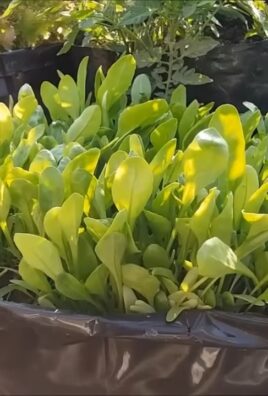
Leave a Comment